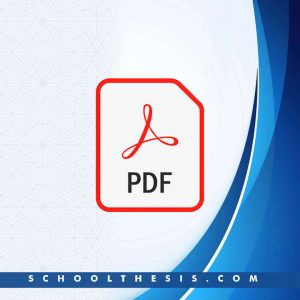Graphological Foregrounding in Chimamanda Adichie’s Purple Hibiscus

Graphological Foregrounding in Chimamanda Adichie’s Purple Hibiscus
Abstract of Graphological Foregrounding in Chimamanda Adichie’s Purple Hibiscus
There is a symbiotic relationship between language structure and language function, which is particularly exploited by literary artists to relate language forms deployed in their texts to their intended messages and visions. This is possible because of the inherent elasticity or malleability of language as a communicative tool which can be shaped or conditioned by the social or discourse situation. With M.A.K Halliday’s Systemic Functional Grammar as the analytical template, this study, therefore, discusses the paralinguistic devices such as length of the text, paragraph structure, punctuation marks, topography, etc, utilized by Chimamanda Adichie to complement verbal signifiers and foreground critical and strategic aspects of meaning in relation to context of situation and textual function in her Purple Hibiscus. The study adumbrates the fact that paralinguistic resources of language have pragmatic force, in the sense that they help writers to capture contextual or stylistic meaning, enhance textual appeal, and also aid scholars/readers to conveniently comprehend and interpret the ideological contents or propositions contained in their texts. It, therefore, concludes that any explication of the meaning of literary texts without due and careful recourse to the subtle nuances of graphological patterning, is less than adequate.
Keywords: Graphological foregrounding, Purple Hibiscus, Systemic functional grammar, Stylistic meaning, Social context
Chapter One of Graphological Foregrounding in Chimamanda Adichie’s Purple Hibiscus
INTRODUCTION
BACKGROUND OF THE STUDY
Graphology is the art and science of deciphering a person’s personality characteristics from their handwriting.
Essentially, writers deploy diverse ways not only to encode and disseminate their artistic vision and message, but also to achieve formal beauty in their texts. This is because the hallmark of a good writer, that is, what makes him to stand out from the crowd, is contingent both on the ideological content and propositions of his work as much as his stylistic peculiarities or distinctions and the extent to which both aspects (i.e content and container) relate. This thesis explains why writers take advantage of the elasticity of language in sundry ways in their discourses, in the sense that “language implies the availability of an internal structure which makes it possible for the writer or speaker to construct texts that are not only coherent but also situationally appropriate” (Adeyanju, 2008:87). In addition, the thesis also explains why writers employ various paralinguistic devices to complement linguistic choices, make meaning more precise and graphical, as well as enhance the aesthetic texture and appeal of their texts.
Amongst the latter set of stylistic resources highlighted above (i.e paralinguistic devices), are graphological elements or patterns which are of the visual dimension of language use, such as italicization, capitalization, punctuation, indentation, etc. These paralinguistic resources help writers to capture particular pragmatic senses in texts and aid the readability, comprehension and interpretation of linguistic forms in given situational or textual contexts. According to Adegoju (2008:160), Graphology concerns such matters as spelling, capitalization, hyphenation, a text’s layout, lists, font choices, underlining, italicization, paragraphing, colour, etc which can all create different kinds of impact, some of which will cause the reader to react differently.
Ngara (1982:17) echoes a similar viewpoint when he observed that graphology covers such areas as the layout of the text, colour, shape of the printed marks, punctuation, paragraphing and spacing, etc. Short (1996:54-57) adds that splitting of a word to separate letters, writing all words together without orthographical spaces, etc, are also graphological patterns or symbols.
STATEMENT OF THE PROBLEM
Etymologically, the term “graphology” has Greek roots-‘grapho’ meaning writing and ‘logos’ meaning word and, in its more known sense, it focuses on or deals primarily with handwriting. The term has, however, become very crucial and strategic in linguistic circles, particularly in descriptive stylistics and its use has extended to the study of all subtly meaningful symbols and signs, including pictorial devices, which help authors and writers to communicate messages. It is apparently most effective and applicable to an ideophonic language like English whose writing system largely depends on a set of symbols and signs. According to Alo (1998:5), the descriptive study of style rests on the analysis of language resources which can be found at the various levels of language description including the following: i. Phonology (sounds/sound effects) ii. Lexis (word usage and diction) iii.Grammar (word and sentence structure) iv. Semantics (units of meaning) v. Graphology (orthography or writing system) vi. Pragmatics (language for action or getting things done).Thus, this study tends to investigate the graphological Foregrounding in Purple Hibiscus written by Chimamanda Adichie.
OBJECTIVES OF THE STUDY
The primary objective of this study is to examine the graphological foregrounding in Purple Hibiscus written by Chimamanda Adichie. This study seeks to examine the background of the author, synopsis of the text, conceptualization of the text, textual analysis of the book, length of the text, paragraph structure of the text, punctuation in the text, and the typography of the text.
RESEARCH QUESTIONS
l What is the synopsis of the text?
l How is the text conceptualized?
l What textual analysis was used in the text?
l What is the length of the text?
l What paragraph structure was used in the text?
l How was the Punctuation and typography of the text?
SCOPE OF THE STUDY
This study is focuses only on the graphological foregrounding of Chimamanda Adichie’s book titled “Purple Hibiscus”.
SIGNIFICANCE OF THE STUDY
This study on the graphological foregrounding of Chimamanda Adichie’s Purple Hibiscus will be significant to
